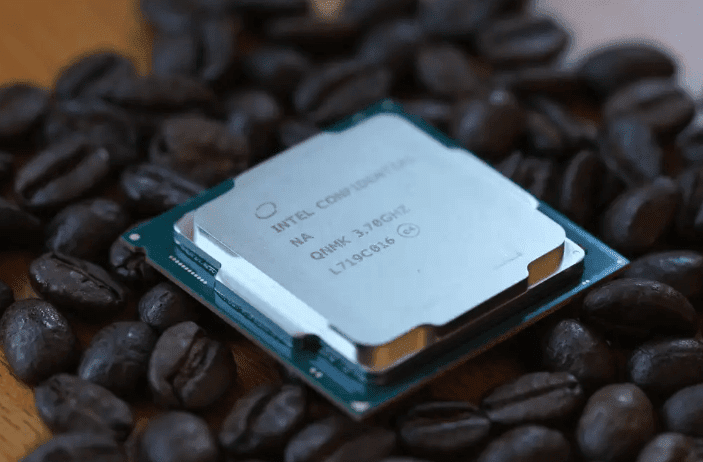In the world of industrial computing, one name stands out among the rest – Intel.
In the world of industrial computing, one name stands out among the rest – Intel.
Renowned for its high-performance processors, Intel has long captivated the market with its innovative technologies. But behind the scenes, there is a hidden language that Intel speaks – the language of code names.
In this article, we will delve into the mysterious world of Intel code names, exploring why Intel uses them, what they mean, and what they reveal about the company’s new products.
The Origins of Intel Code Names
To understand the origins of Intel code names, we must first look at the company’s development centers. While Intel’s headquarters are located in Santa Clara, California, much of the development work takes place in Oregon and the Sierra Nevadas area of northern California, with additional operations in Israel. It is from these surroundings that Intel engineers draw inspiration for their code names.
Intel’s Local Landmarks
In the early days, Intel code names were often derived from local landmarks around the company’s development facilities. For example, there is Bear Lake, the second-largest natural freshwater lake on the Utah-Idaho border, which served as the successor to Intel’s 965 chipset used on motherboards.
Another notable code name is Yonah, a variant of the Hebrew word “Jonah,” meaning “dove,” which also happens to be the Cherokee word for “bear.” Yonah was the code name for the Core microarchitecture, developed in Israel.
From Cities to Landmarks
As time went on, Intel seemingly ran out of local landmarks to name their products after. The company began using city names that were not necessarily tied to specific locations. For instance, there are code names like Clovertown, Kentsfield, Yorkfield, Whitefield, and Sossaman, which Intel prefers not to associate with specific cities. The shift to city names reflects the company’s desire to maintain a broader, more inclusive naming convention.
A Tour of Oregon and the Sierra Nevadas
Let’s embark on a virtual tour of the regions that have inspired Intel’s code names. In Oregon, we encounter Nehalem, a city in Tillamook County known for its salmon fishing, park, river, and casino. Nehalem is the successor to Intel’s Core architecture and marked the company’s departure from the frontside bus design. Moving over to the Sierra Nevadas, we find Penryn, a small unincorporated city known for its unique bluish-tinted marble. Penryn represents the next generation of processors from Intel and was the first to use 45nm production.

Exploring the Codename Landscape
As we continue our exploration, we encounter a diverse array of code names. Banias, named after a city near Mt. Hermon in the Golan Heights, was the codename for the Pentium M processor developed in Israel. Willamette, a valley between Eugene and Portland with a river of the same name, was the birthplace of Intel’s first Pentium 4 processor. Katmai, a volcano on the Alaska Peninsula, lent its name to the Pentium III line.
Yamhill, taken from a river in the Willamette Valley, referred to a 64-bit extension to the x86 instruction set. Santa Rosa, a mid-sized city in California, became the successor to the Centrino line. Montevina, the first post-Prohibition winery in Amador County, California, succeeded Santa Rosa.
Decoding the Future: Intel’s Processor Families
To understand the significance of Intel code names, we must examine the various processor families they represent. Intel’s flagship family of CPUs is the Intel Core processors, which replaced the popular Pentium line in 2006.
Within the Core brand, you will find modifiers like i3, i5, i7, and i9, which indicate performance levels and features. Each new generation of Core processors brings enhancements in speed, connectivity, and power efficiency.
The Evolution of Intel Core Processors
Intel has made significant strides in processor technology with each new generation of Core processors. Starting with the 8th generation Coffee Lake, Kaby Lake, and Whiskey Lake, Intel introduced improved performance and power efficiency.
The 9th generation Coffee Lake Refresh further refined these advancements, followed by the 10th generation Comet Lake (desktop) and Ice Lake (mobile) processors, which introduced performance hybrid architecture.
The latest 11th generation Rocket Lake (desktop) and Comet Lake Refresh (desktop) processors and Tiger Lake (mobile) processors build upon the previous generations, offering even more power and capabilities.
Beyond Core: Intel’s Other Processor Families
While the Core brand is synonymous with Intel’s consumer processors, the company also offers other processor families catering to different market segments. Xeon processors are designed for servers and workstations, providing exceptional performance, reliability, and security. Pentium and Celeron processors target budget-conscious consumers and entry-level applications.
Each of these processor families also has its own set of code names that reflect their unique characteristics and capabilities.
The Significance of Intel Code Names
Intel code names serve several purposes within the company. Firstly, they provide a means of internal communication during the development process. By using code names, Intel can refer to specific projects without revealing too much information to competitors.
Secondly, code names help generate excitement and anticipation among consumers and the press. The use of intriguing and evocative names helps build anticipation for upcoming products, creating a buzz in the market.
Deciphering the Code: What Intel Code Names Reveal
While Intel code names may seem cryptic, they often offer clues about the features and capabilities of the products they represent.
For example, code names like Coffee Lake and Comet Lake suggest improvements in performance and power efficiency.
By analyzing the naming patterns and the context of each code name, industry insiders and enthusiasts can gain insights into the technologies and innovations that Intel is incorporating into its processors.

The Future of Intel Code Names
As Intel continues to innovate and develop new generations of processors, the world of code names will evolve alongside. The company may draw inspiration from different regions, landmarks, or even abstract concepts to represent its future products.
The only certainty is that Intel code names will continue to captivate our imagination and serve as a window into the exciting world of industrial computing.
Intel code names are not merely random labels; they hold significance and meaning within the company. From local landmarks to city names, these code names reflect the regions and cultures that inspire Intel’s engineers.
By deciphering these code names, we can gain insights into Intel’s product roadmap and the technologies that will shape the future of computing. So, the next time you hear an Intel code name, remember that it represents more than just a product – it represents the culmination of innovative ideas and cutting-edge technology.















